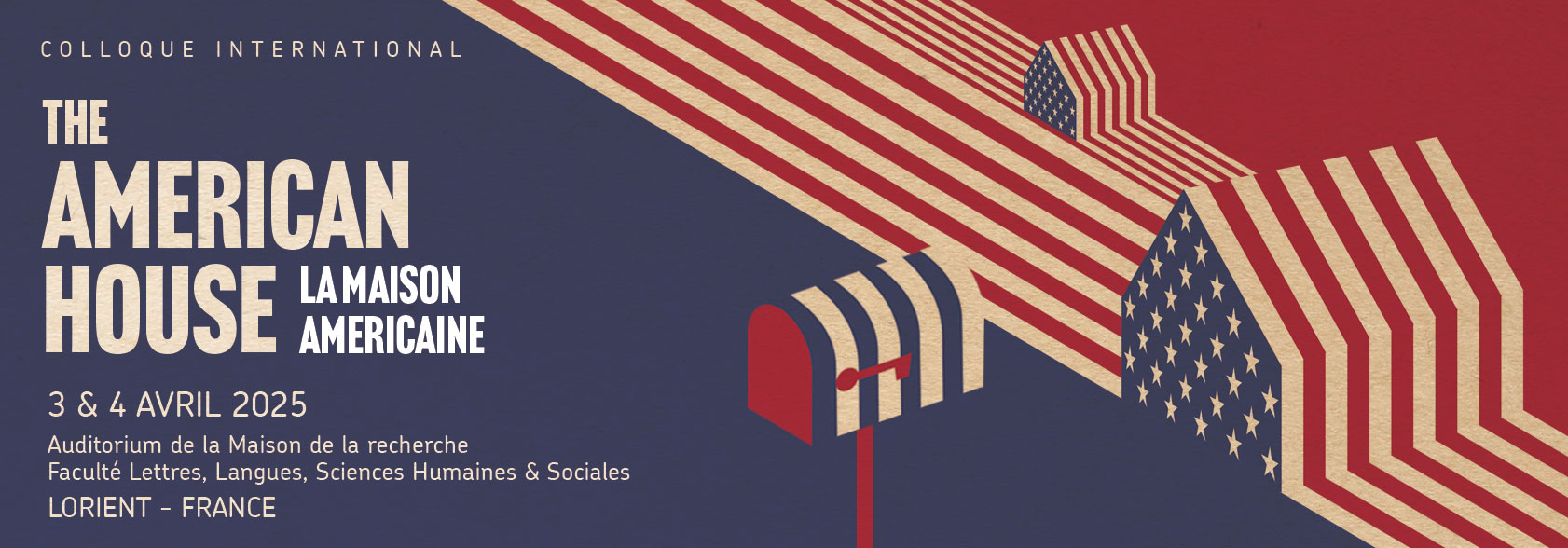
Call for papersVilla, suburban lot, secondary residence, mansion, haunted house, log cabin – the house is a recurring figure through American literature, cinema and TV series. If the “Great American Novel” (often pointed out as an elusive critical object) fails to be clearly and straightforwardly defined, the American house yet asserts itself, from Cooper to Danielewski, as one of its structuring metaphors. In Morrison’s Beloved, 124 is a haunted place that brings America back to its slaveholding past; Hawthorne’s house of the seven gables harbors the bloody ghosts of Puritanism; both gawdy and sublime, Gatsby’s villa embodies the paradox of a dream that would be “material without being real;” while Faulkner’s The Mansion mirrors, on a larger scale, America’s “house divided,” unable to put to rest a war that still fractures the country. The house thus stands as a synecdoche used to conceptualize the nation itself. Unified or fragmented, it functions as a mirror of America itself; its destiny is tied to that of the great family sagas and thus allows to consider simultaneously heredity, territory, and property. The political dimension of the house and of the social structure it relies on deserves to be examined both in fiction and non-fiction. Who owns a house and who is excluded from property? This question runs through the United States’ history from the first instances of colonization to the current housing crisis. One could also wonder how literature and cinema deal with renting and tenants: who are those that do not own the place they live in and what is their relationship to it? From Steinbeck’s (and Ford’s) sharecroppers in Grapes of Wrath to the motel dwellers of The Florida Project (Sean Baker), the precarious situation of the characters seems to prompt the narrative forward. It also raises political issues, bringing about and fueling several forms of marginalization within the nation and the narrative, as in Jessica Bruder’s book Nomadland and its movie adaptation by Chloé Zhao. The growing popularity of reality TV which focuses on a house (Two Chicks and a Hammer, HGTV channel, real-estate or interior-design shows) reflects a form of obsession with owning, bequeathing, setting up, and living in the American house. Building one’s house, inhabiting it and protecting it, flourishing and withering in it: literature keeps staging houses and how they redefine the space they are built on. From its inception, the North American nation was founded on the fencing of plots appropriated from the wilderness, and, thus, from indigenous people, nature, and the devil. These first pioneer settlements, dearly fought for and erected, reinforce a certain vision of Americanness as agonistic, between man and the hostile external world. The American house was therefore initially conceived of as a place where Christian morals and civilization may be (re)established, and as a pocket of resistance against the onslaughts of a fiendish and fascinating nature, as well as its various avatars. It has successively been standing as a sanctuary against the natives, a part of the City upon a Hill envisioned by Puritan writings, an expression of white domination over enslaved populations both in Mitchell’s Gone with the Wind and Flynn’s Sharp Objects, an ideal of quiet domestic life in the suburbs, removed from urban crime and violence, or a fortified castle, besieged by deranged figures invading family life, as in the TV show Criminal Minds. The house, as the ultimate seat of intimacy, is at the heart of family and collective crises and stories. Gradually, it becomes clear that what threatens the house is not so much external as internal: enemies, both real and metaphorical, both individual and common, have been coming back and haunting it from Poe’s publication of “The Fall of the House of Usher,” from the basement (in Stephen King’s ‘Salem’s Lot and Jordan Peele’s Get Out) to the attic in Hereditary, directed by Ari Aster. As metaphors for the mind (with the progressive conceptualization of the subconscious and of the psyche as an architecture), these houses offer many self-reflective frames and cast a specific light upon the characters’ inner lives (“The Yellow Wallpaper” by Gilman), or upon a certain vision of literature (did not Henry James coin the “house of fiction” with its million windows?). Faulkner, for his part, likens the writer’s craft to that of a carpenter, thus allowing for a spatial approach of the text as a framework made of surfaces, beams, and partitions. Once one begins paying attention to the house’s literal structure, what might be embodied by the living room, parental suite, basement, attic, garage, kitchen, or storeroom? And how not to be compelled by the symbolical power of thresholds, façades and openings?
Presentations might, for example, explore the following research questions:
|

